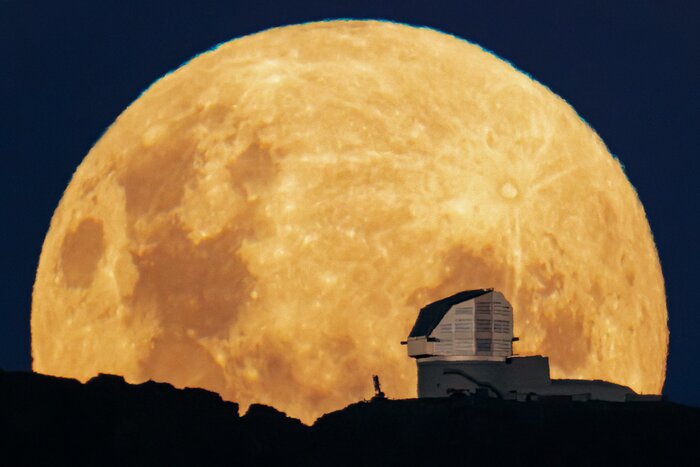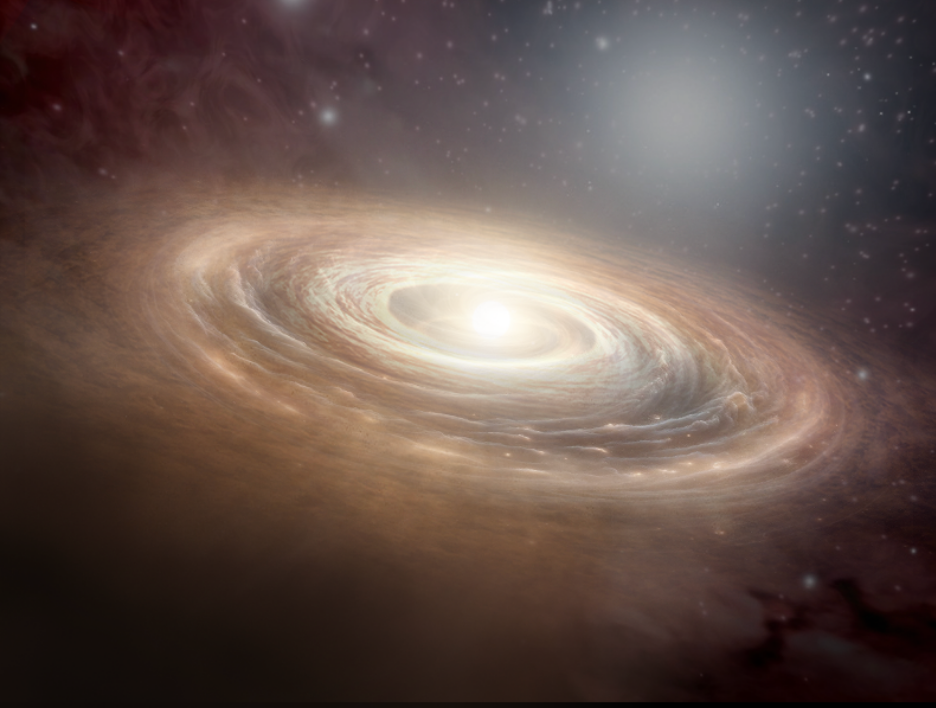
Astronomers capture individual stars 6.5 billion light-years from Earth
From Chile astronomer was part of this research considered a breakthrough for the study of the evolution of galaxies: it was possible to photograph more than 40 stars in a galaxy whose light comes from a time when the universe was only half its current age.
The feat is compared to trying to observe grains of dust in the craters of the Moon using binoculars, but a team of astronomers achieved what until now seemed impossible: they photographed a large number of individual stars in a galaxy located almost 6.5 billion light-years from Earth.
This is according to research published in the journal Nature Astronomy, led by astronomers from the Steward Observatory of the University of Arizona and in which astronomer Franz Bauer, a researcher associated with the Center for Astrophysics and Related Technologies (CATA), the Millennium Institute of Astrophysics (MAS) and an academic at the Institute of Astrophysics of the Catholic University, participated from Chile.
According to the research, this new achievement for world astronomy was reached using NASA’s James Webb Space Telescope (JWST), with the additional help of the effect known as “gravitational lensing”, which was predicted by Albert Einstein in his Theory of General Relativity.
Galactic lens
Although galaxies have billions of stars, so far astronomers have been able to image groups of individual stars in closer galaxies, such as our neighbor Andromeda, but in the distant universe only a few stars have been imaged.
Franz Bauer says that his participation in this project arose from an international JWST collaboration called MAGNIF, designed to observe very distant galaxies. The main difficulty,” he explains, ”is that in galaxies billions of light-years away, stars appear to merge into a diffuse glow because their light must travel enormous distances before reaching us. This has so far posed a major challenge to the study of galaxy formation and evolution.
The discovery, described as a “treasure trove of invisible stars,” was made while astronomers were analyzing JWST images of a galaxy known as Dragon’s Arch, which from Earth’s perspective lies behind a cluster of galaxies called Abell 370.
It was this cluster of galaxies that generated the gravitational lensing effect, which corresponds to a kind of galactic zoom, a natural amplification effect caused by the gravitational fields of massive objects. This allowed the spiral shape of the Dragon’s Arc galaxy to be transformed into an elongated figure, as if it were a cosmic “funhouse mirror”.
However, such a gravitational amplification was not yet sufficient to magnify individual stars in such distant galaxies, but a sum of coincidences made the finding possible. As the research details, within the galaxy cluster many stars float freely, unbound to a particular galaxy, but as they passed in front of even more distant stars in the Dragon’s Arc, they acted with an “additional microlensing” that helped to image them.
“The combination of macrolensing and microlensing effects dramatically increases the magnification factor, allowing the JWST to detect individual stars that would otherwise be too faint and distant to be observed,” the research explains.
Dark matter and star formation
A total of 44 stars were analyzed, with many of them being red supergiants, similar to Betelgeuse in the constellation Orion, which is in the final stages of its life. This contrasts with previous discoveries, which identified predominantly blue supergiants in this area, such as Rigel and Deneb, stars that are among the brightest in the night sky.
According to the researchers, this difference in stellar types demonstrates the power of JWST to observe at infrared wavelengths and detect lower-temperature stars. Future observations with JWST are expected to enable detailed studies of hundreds of stars in distant galaxies, providing information on the structure of gravitational lensing and helping to better understand the elusive nature of dark matter.
“The large number of individually detected stars allows us to identify variations in how stellar populations are created across the extent of this galaxy, helping to better understand how the mass assembly and star formation process operates,” says the MAS/CATA astronomer.
But what were these distant stars like compared to today’s stars? Franz Bauer points out that they were not very different from those we find today in the Milky Way. However, he adds, galaxies formed much of their stars during a period between 20% and 60% of the age of the universe. “But the environment around a galaxy at earlier epochs had a much larger supply of gas, so studying the distribution of these stars gives us an idea of how galaxies assembled into the structures we see today in the nearby universe.”
The astronomer concludes that the properties of the Dragon’s Arc spiral galaxy are quite similar to what we might expect the Milky Way to have had 6.5 billion years ago, and therefore, studying it can provide valuable information about the history and formation of our galaxy.
Recent news
-
 Publicado el: 04/07/2025CATA researchers among the best in Chile according to international ranking Research.com
Publicado el: 04/07/2025CATA researchers among the best in Chile according to international ranking Research.com -
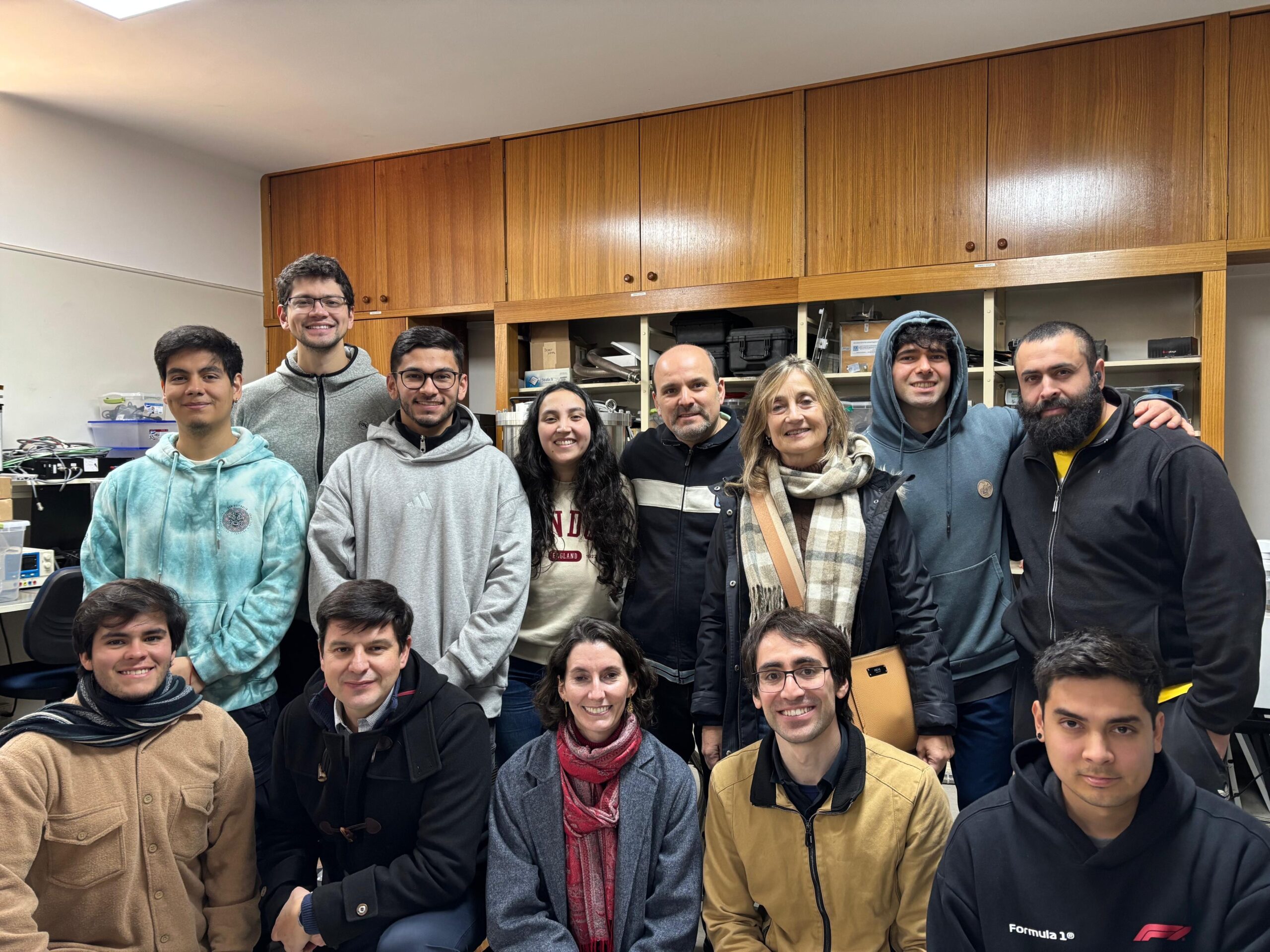 Publicado el: 30/06/2025CATA Director strengthens ties in her second institutional tour
Publicado el: 30/06/2025CATA Director strengthens ties in her second institutional tour -
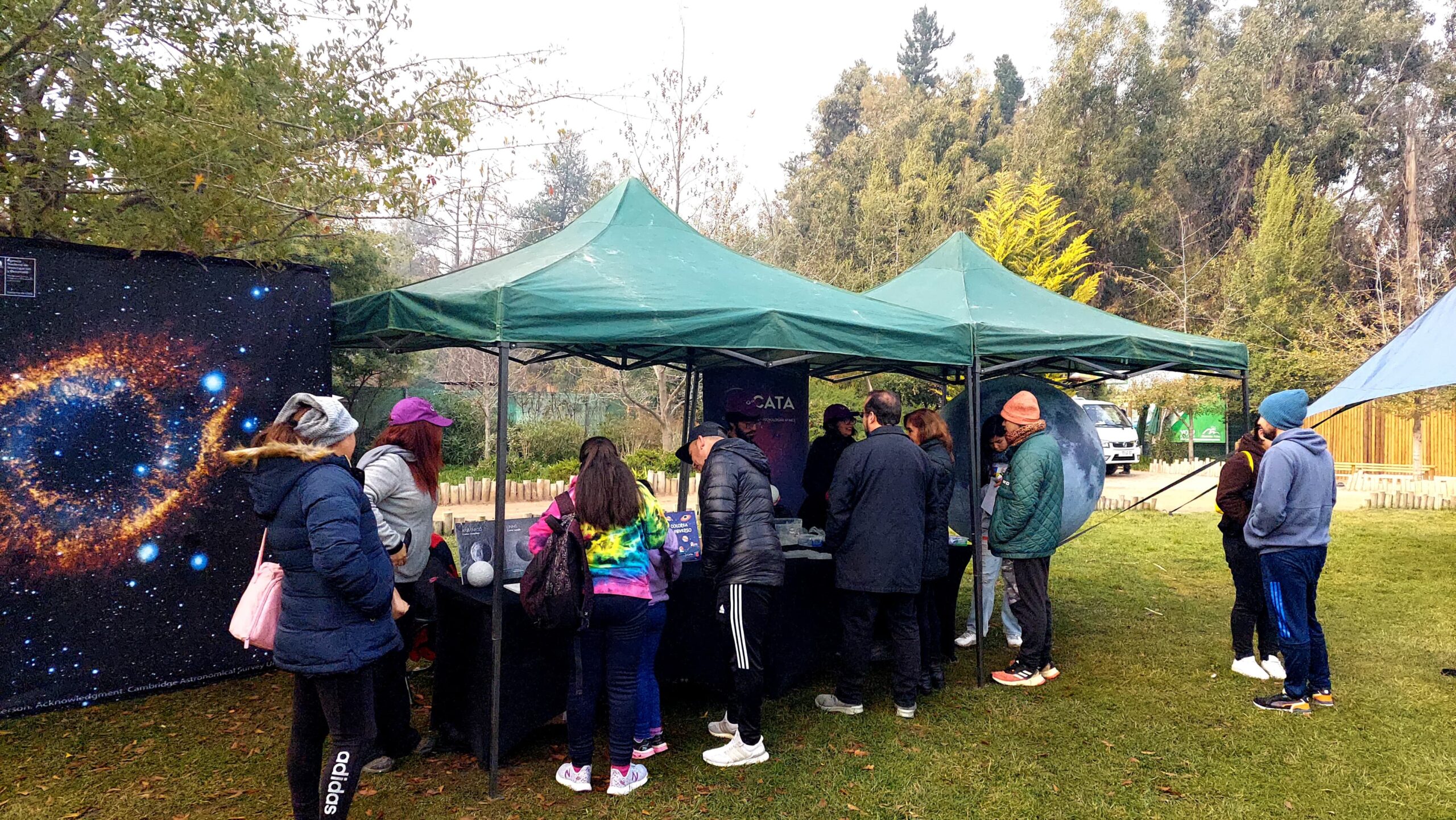 Publicado el: 30/06/2025CATA celebrated Asteroid Day 2025 at the Pueblito de Las Vizcachas Park
Publicado el: 30/06/2025CATA celebrated Asteroid Day 2025 at the Pueblito de Las Vizcachas Park -
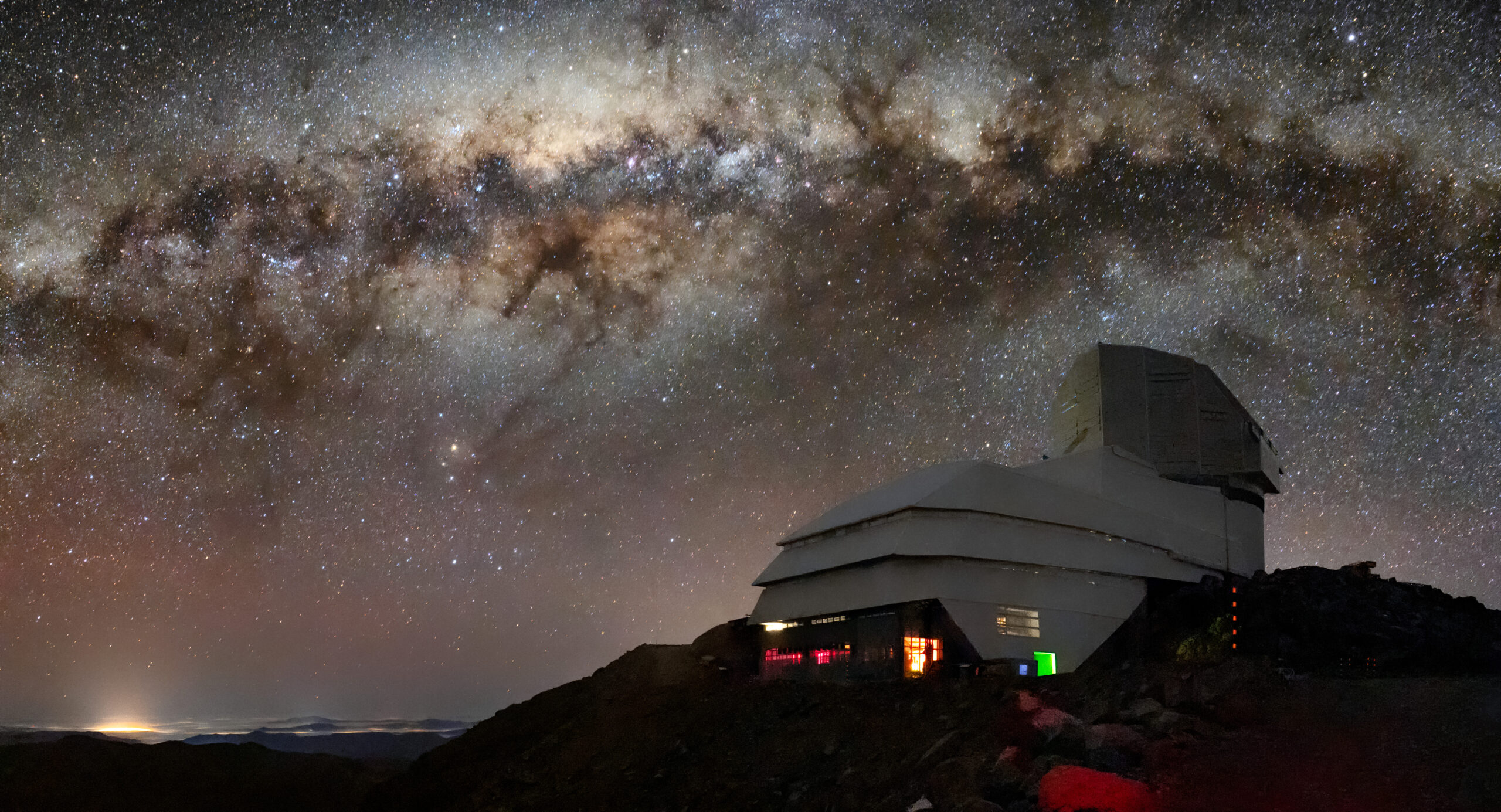 Publicado el: 26/06/2025Vera C. Rubin: the telescope that watches the sky and anticipates the future of astronomy
Publicado el: 26/06/2025Vera C. Rubin: the telescope that watches the sky and anticipates the future of astronomy -
 Publicado el: 25/06/2025CATA researchers appointed as Full Professors at Universidad Andrés Bello
Publicado el: 25/06/2025CATA researchers appointed as Full Professors at Universidad Andrés Bello
Categories list
- Acknowledgments 19
- Astrobiology 5
- AstroCluster 1
- Black holes 13
- Corporativo 49
- Cosmology 4
- Descubrimientos 19
- Disclosure 46
- Exoplanets 13
- Extension 4
- Galaxies 17
- Galaxies formation 2
- Inter y Transdisciplina 2
- Local Universe 13
- Publications 5
- Sin categorizar 31
- Solar System 11
- Stellar formation 6
- Technology 9
- Technology Transfer 12

